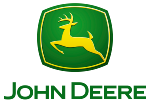
In this report, we look at the customer growth strategies of one of our companies within our W-30 coverage (Deere), and how well those strategies match up to their customer’s perceptions.

In this report, we look at the customer growth strategies of one of our companies within our W-30 coverage (Deere), and how well those strategies match up to their customer’s perceptions.